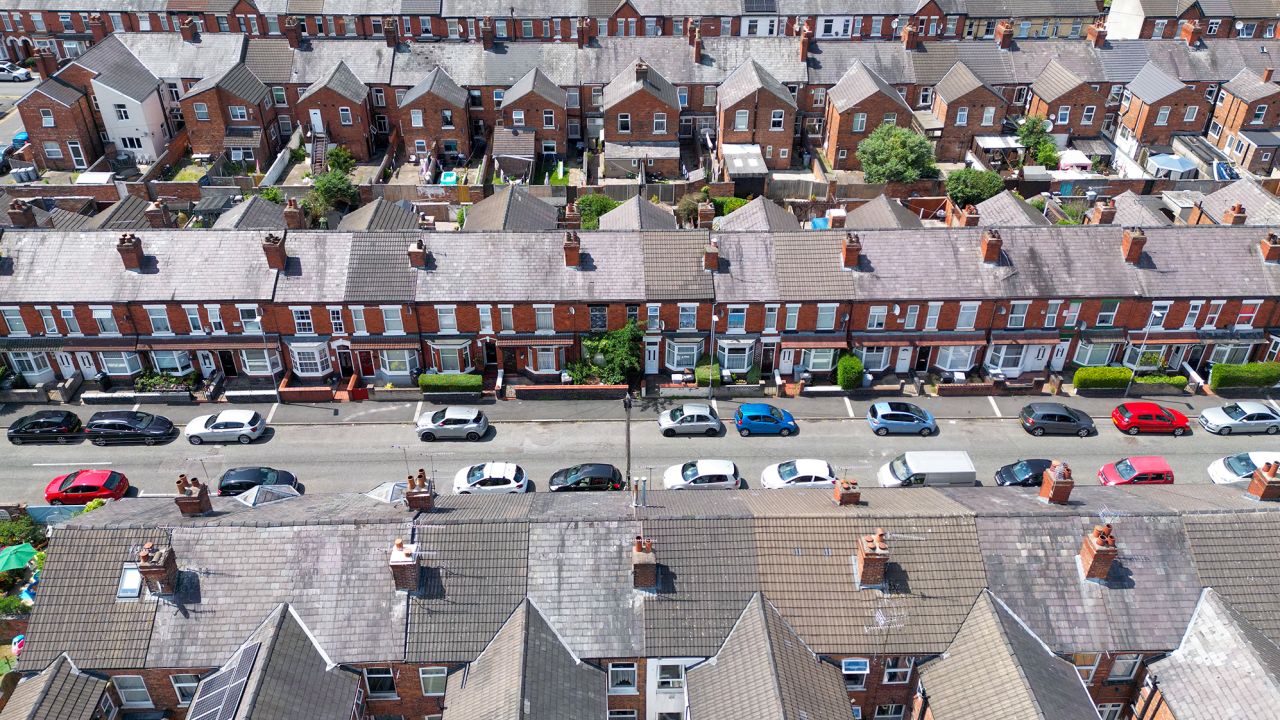London
CNN
—
When central banks raise interest rates, mortgage borrowers can expect higher monthly repayments, while savers are supposed to be rewarded with bigger returns on their deposits. Or so the theory goes.
A top UK financial regulator has called a meeting with the bosses of the country’s biggest banks Thursday for them to explain why the rates on their savings accounts lag so far behind the central bank’s main interest rate — as well as the interest they charge on mortgages and other loans.
Some lawmakers and consumer rights advocates think profiteering is the reason.
It’s a similar story elsewhere in Europe and in the United States where, after more than a year of aggressive rate hikes to tame inflation, the interest that savers earn on their cash has been left in the dust.
In the US, where benchmark borrowing costs stand between 5% and 5.25%, the typical savings account pays out just 0.42% in annual interest, according to the Federal Deposit Insurance Corporation (FDIC).
Meanwhile, the cost of a typical 30-year fixed-rate mortgage has hit 6.71%.
Among the 20 countries that share the euro currency, the average instant-access savings account pays a measly 0.21% in annual interest, according to provisional data from the European Central Bank, while the average mortgage comes with a 3.44% charge.
In the United Kingdom, the typical instant-access savings account is earning 2.42% in interest, according to financial product comparison website Moneyfacts. That’s less than half the Bank of England’s official rate of 5% and far below the 6.47% in interest lenders are charging on the average two-year fixed-rate mortgage.
On that basis, a hypothetical UK homeowner with a £100,000 ($127,200) mortgage and £100,000 in a savings account can expect to pay out almost £540 ($698) per month but receive only about £200 ($254) in interest.
Big banks typically make a lot of their profit by lending money at higher interest rates than they pay savers for their deposits, but the recent widening of the gap between the two sets of rates is what’s fueling accusations of greedy behavior by lenders.
Addressing parliament last week, UK finance minister Jeremy Hunt said it was “taking too long” for savers to feel the benefits of high official interest rates, particularly for those who wanted to access their money quickly.
In Asia, the picture is less uniform: China cut its benchmark lending rate last month, adding to recent reductions in other interest rates, and Japan has kept its main interest rate negative in a bid to stimulate demand. In South Korea, meanwhile, borrowing costs have risen sharply. However, rates on savings accounts there are closer to the central bank’s main rate than in other major economies.
Central banks, tasked with bringing inflation down from multi-decade highs, hope more attractive savings rates will encourage consumers to park their money, rather than spend it, helping reduce demand and so price rises. Inflation in the UK has proven particularly stubborn, staying at 8.7% in May.
But, by keeping savings rates low, banks now have the opportunity to “make up for lost time,” Sarah Coles, head of personal finance at UK investment firm Hargreaves Lansdown, told CNN.
“While interest rates were ultra-low, the mortgage market was incredibly competitive, so [banks] were operating on unusually small margins between savings rates and mortgage deals… so they’re busy filling their boots,” she said.

Bank chiefs have denied accusations of profiteering, pointing to the higher rates offered on savings accounts that allow savers to withdraw money after a set period of time.
UK Finance, which represents the country’s banks, told CNN in a statement that “saving and mortgage rates aren’t directly linked and therefore move at different times and by different amounts.”
“Savings rates are driven by a number of factors, not just the Bank of England’s Bank Rate — one key factor is whether someone wants instant access or can deposit money for a longer period of time.”
A spokesperson for HSBC
(HBCYF) told CNN that the lender had raised its savings rates “more than a dozen times since the beginning of last year.” A spokesperson for Barclays
(BCS) said its savings rates were under “regular review.”
But savers feeling shortchanged are heading for the exit.
Cash deposits held at commercial banks in the US have declined 2.2% since the start of the year, FDIC data shows. In the euro area, the value of deposits has fallen 1.2% over that time.
At the same time, in the US, money market funds — which invest in low-risk short-term securities like government bonds, and offer significantly higher returns than most savings accounts — are doing a roaring trade.
The top 100 US money market funds tracked by Crane Data are offering an average annual interest rate of 4.94%. Flows into these funds have jumped over 13% so far this year, taking their total asset value to an all-time high of $5.9 billion in early June.
Peter Crane, president of Crane Data, told CNN he expected this record to be topped in the coming weeks.
Across the pond, UK households withdrew a record £4.6 billion ($18.5 billion) from banks in May. That’s the largest amount since the Bank of England started tracking monthly outflows in 1997. Within that, withdrawals from instant-access savings accounts more than doubled compared with April.
It is difficult to know exactly why depositors are pulling money out — whether they’ve been spooked by the collapse of three regional US lenders earlier this year, or whether they simply need the cash to pay rising bills. Crane thinks many savers are chasing higher returns.
“You can drive a truck through [the] spread” between the returns offered by money market funds and the typical savings account at a bank, Crane said. “Investors are downright insulted by that.”